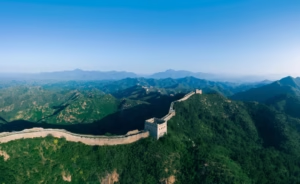Meghalaya: The Abode of Clouds, Geography and History
Meghalaya, a beautiful state in northeastern India, is known for its lush green landscapes, heavy rainfall, misty hills, and rich cultural history.
The name “Meghalaya” means “abode of clouds” in Sanskrit, which perfectly describes its cloudy skies and rainy climate.
In this article, we will explore the geography, rainfall patterns, and historical background of this unique and enchanting state.
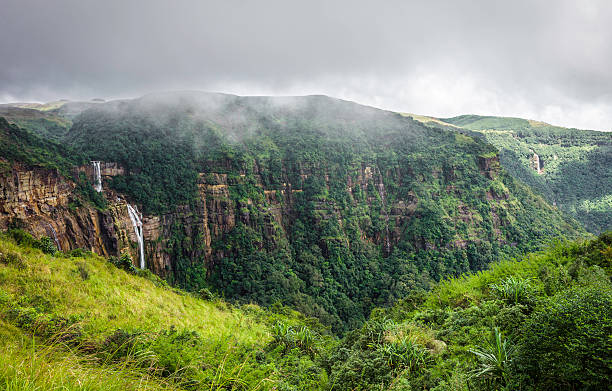
1. Introduction to Meghalaya
Meghalaya is one of the seven northeastern states of India, also known as the “Seven Sisters.” It became a full-fledged state on January 21, 1972, after being carved out from Assam.
Its capital is Shillong, often called the “Scotland of the East” because of its scenic beauty and cool climate.
2. Geographical Location
Meghalaya is located in the northeastern region of India, bordered by:
- Assam to the north and east
- Bangladesh to the south and southwest
Latitude and Longitude
- Latitude: 25.57° N
- Longitude: 91.88° E
The state covers an area of about 22,429 square kilometers, making it one of the smaller states in India. Despite its size, it boasts a diverse and rich topography.
3. Physical Features
a. Hills and Plateaus
Meghalaya is mostly made up of hills, plateaus, and valleys. The three major hill ranges are:
- Khasi Hills
- Jaintia Hills
- Garo Hills
These hills form part of the Patkai range and are known for their beautiful landscapes, caves, and waterfalls.
b. Rivers
The state has several rivers, most of which flow southwards into Bangladesh. The important rivers include:
- Umiam River
- Myntdu River
- Simsang River
- Kynshi River
These rivers are mainly rain-fed and are very important for irrigation, drinking water, and hydroelectric power.
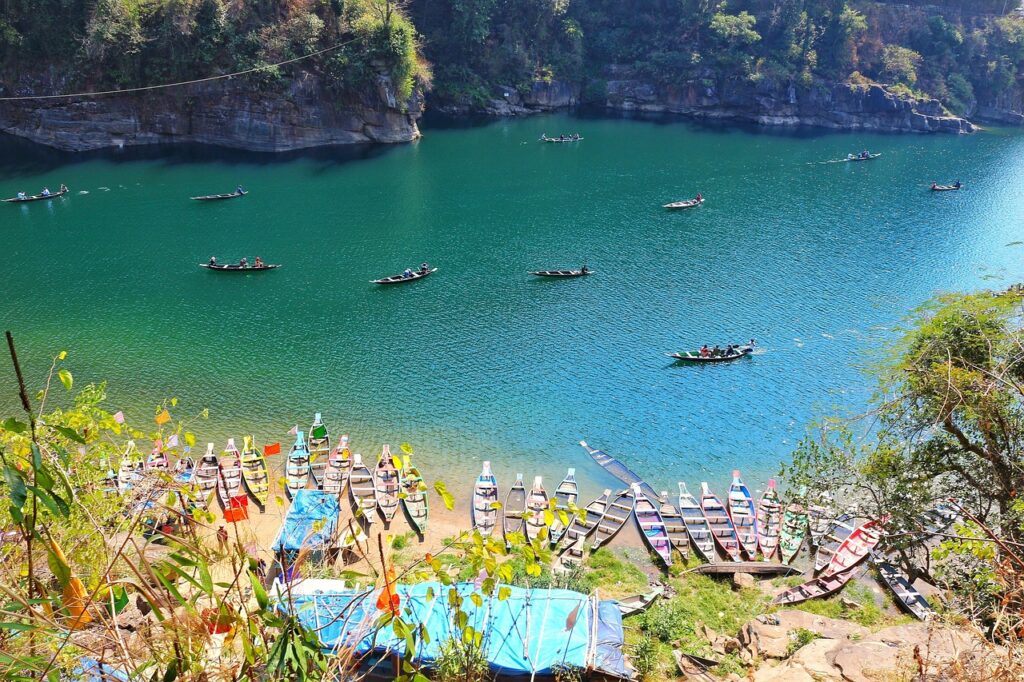
c. Soil and Vegetation
The soil in Meghalaya is rich in organic content, supporting thick forests. The major types of soil found here are:
- Red loamy soil
- Lateritic soil
The state is covered with tropical and subtropical forests and is home to many species of plants, animals, and birds.
4. Climate and Rainfall
a. Climate
Meghalaya has a moderate climate, with cool summers and mild winters. The temperature usually ranges between 4°C to 30°C, depending on the season and elevation.
The state experiences three major seasons:
- Summer (March to June)
- Monsoon (June to September)
- Winter (October to February)
b. Rainfall
Meghalaya is one of the wettest places on Earth.
- Cherrapunji and Mawsynram, located in the Khasi Hills, receive over 11,000 mm of rainfall annually.
- Mawsynram holds the world record for the highest average annual rainfall.
The rainfall is mostly orographic — caused when moist winds from the Bay of Bengal hit the hills and rise, cooling and condensing into heavy rain.
https://sypertimes.com/dal-lake-the-jewel-of-kashmir-geography-and-history/
c. Impact of Rainfall
Heavy rainfall influences:
- Agriculture: It supports rice, maize, and vegetable cultivation.
- Forests: Dense forests thrive in the moist climate.
- Waterfalls: The state has many spectacular waterfalls like Elephant Falls, Nohkalikai Falls, and Seven Sisters Falls.
- Soil erosion: Due to steep slopes and heavy rain, soil erosion is a major concern.
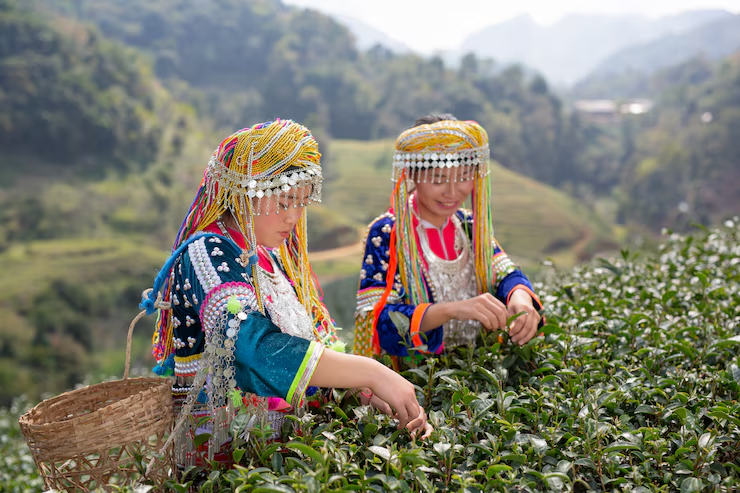
5. Natural Beauty and Biodiversity
Meghalaya is a biodiversity hotspot. The state has:
- Sacred groves: Protected forest areas with rare plant species.
- Living root bridges: Made by training the roots of rubber trees to form natural walkways.
- Caves: Such as Siju, Mawsmai, and Liat Prah, which attract geologists and tourists.
The state is home to animals like clouded leopards, barking deer, and many species of butterflies and birds.
6. People and Culture
The major ethnic groups in Meghalaya are:
- Khasi
- Garo
- Jaintia
These communities are mostly tribal and follow a matrilineal system, where the family name and property pass through the mother.
They have rich traditions in music, dance, and festivals. Important festivals include:
- Shad Suk Mynsiem (Khasi)
- Wangala (Garo harvest festival)
- Behdeinkhlam (Jaintia religious festival)
7. A Glimpse into Meghalaya’s History
a. Ancient Times
Meghalaya was historically inhabited by tribal communities, mainly the Khasis, Garos, and Jaintias. These groups had their own kingdoms and were mostly independent, living in small village units.
The Khasi and Jaintia communities followed a system of village administration, with chiefs known as Syiem and Doloi.
b. Colonial Period
The British arrived in the 19th century and gradually brought the region under their control:
- The Khasi Hills were annexed in 1835.
- The Jaintia Kingdom was taken over after a revolt in 1835.
- The Garo Hills were brought under control in 1873.
The British introduced modern education, roads, and administration systems. Shillong was made the capital of Assam Province and became a center of British colonial administration.
c. Post-Independence Period
After India gained independence in 1947, Meghalaya remained part of Assam. However, the people of the region demanded a separate state to preserve their identity and culture.
After years of peaceful movement, Meghalaya became an autonomous state in 1970 and a full-fledged state on January 21, 1972.
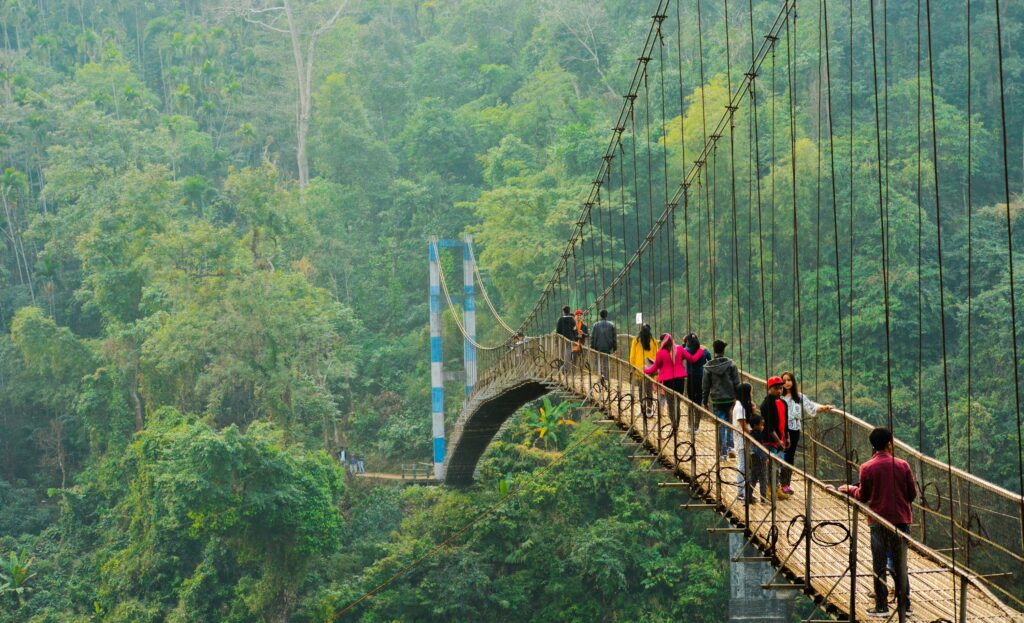
8. Economy and Development
a. Agriculture
Most people in Meghalaya are engaged in agriculture. The main crops are:
- Rice
- Maize
- Potatoes
- Fruits like oranges, pineapples, and bananas
Shifting cultivation or Jhum farming is still practiced in some areas, though it’s being replaced by settled farming.
b. Minerals
Meghalaya has deposits of:
- Coal
- Limestone
- Uranium (controversial and under debate)
However, mining activities have raised environmental concerns.
c. Tourism
Tourism is a growing part of the economy. Key tourist attractions include:
- Shillong city
- Living root bridges of Nongriat
- Mawsynram and Cherrapunji
- Umiam Lake
- Dawki river and crystal-clear waters
9. Challenges and Way Forward
Challenges
- Environmental degradation due to deforestation and mining
- Soil erosion and landslides
- Unemployment and underdeveloped infrastructure
- Flooding during monsoons
Solutions
- Promoting eco-tourism and sustainable agriculture
- Better road and health infrastructure
- Environmental protection policies and awareness programs
10. Conclusion
Meghalaya is a land of natural beauty, cultural richness, and unique traditions. Its hills, forests, waterfalls, and friendly people make it one of India’s most charming states.
Despite facing challenges, Meghalaya holds great promise for the future if its natural and cultural resources are preserved and developed wisely.
Whether you are a nature lover, a history enthusiast, or someone who enjoys learning about different cultures, Meghalaya has something for everyone.



